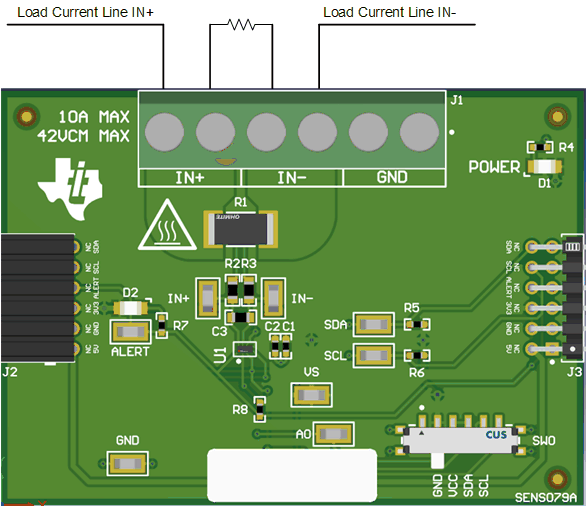SBOU264B May 2021 – December 2022 INA232 , INA234 , INA236
4.2.3.2 With Shunt Resistor
To configure a measurement evaluation with a shunt resistor, follow these steps:
- Connect a shunt resister by doing either of the following:
- Solder a 2512 resistor across the pads of R1 that connects the IN+ and IN– inputs.
- Connect an external shunt across the IN+ and IN– terminals of J1, preferably across pins 4 and 5 (see Figure 4-16).
- If an external shunt is being used, make the connections such that the sensing location is across the shunt and there will be no high current on the sensing path. See the TI Precision Labs - Current Sense Amplifiers: Shunt Resistor Layout video for more information.
- Connect the IN+ and IN– terminals in series with the load while powered off.
 Figure 4-16 IN+ and IN– Wiring With a Shunt ResistorWARNING:
Figure 4-16 IN+ and IN– Wiring With a Shunt ResistorWARNING:If measuring current, first make sure that the equipment (shunt resistor, wires, connectors, and so on) can support the amperage and power dissipation. Secondly, make sure that the current flowing through J1 does not exceed 10 A. Failure to do so can result in damage to the EVM, or personal injury.
Do not touch high voltage terminals.
The EVM may get hot.
- Connect the VBUS terminal (J1 pin 2) to the desired bus voltage (likely either IN+ or IN–).
- Connect the system ground to the GND terminal (J1 pin 1).
- Power on the system, and observe the device states and outputs through the GUI.